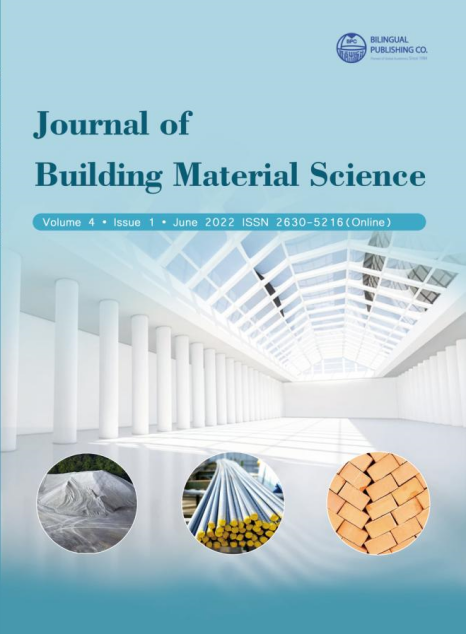
Comparative Analysis of Curing Methods: Natural and Activated Lateritic Concrete
DOI:
https://doi.org/10.30564/jbms.v4i1.4476Abstract
This work was on non-activated and activated lateritic soil used in proportions of 0 % to 30 %, to replace fine sand by wt. %, in the production of lateritic concrete. A mix of 1: 2: 4 was used, and the cube samples were cured in four (4) curing media of water, sand, polythene, and sawdust. The aim was to evaluate the effects of these curing methods on the mechanical strengths, and other properties of lateritic concrete. The sensitivity of the generated data was characterized statistically and developing linear regression models for predictions. For the Non-Activated Laterite soil (NALS, control mix (0 %)), the design strength of 20 MPa was achieved by all the curing methods (standard and non-standard). However, for other replacement levels, water curing was adequate for 10 % and 30 %, sand at 10 %, and sawdust for 20 % and 30 %, respectively. On the other hand, for the Activated Laterite soil (ALS), the 20 MPa design strength was met only at 0 % replacement for all curing methods. Sawdust medium at 10 % also satisfied the 20 MPa strength.
Keywords:
Standard and non-standard curing; Non-activated and activated laterite soil; Compressive strength; Linear shrinkage; Statistical and linear regression modelsReferences
[1] OECD, 2012a. OECD Environmental Outlook to 2050: The Consequences of Inaction, OECD Publishing Paris.
[2] Miller, S.A., Horvath, A., Monteiro, P.J.M., 2018. Impacts of booming concrete production on water resources worldwide. Nature Sustainability. 1, 69-76.
[3] ASTM C31/C31M-21. Standard Practice for Making and Curing Concrete Test Specimen in the Field.
[4] Obia, K., Rodriguez, F., Ben-Barka, S., 2005. Effects of non-standard curing on strength of concrete. NRMCA Research Laboratory – Series D335 and D338, 1-4.
[5] Nahata, Y., Kholia, N., Tank, T.G., 2014. Effect of curing methods on efficiency of curing of cement mortar. APCBEE Procedia. 9, 222-229.
[6] Rahman, M.S., Islam, S.M.M., Abedin, M.Z., 2012. Effect of curing methods on compressive strength of concrete. Bangladesh Journal of Agricultural Engineering. 23(1 & 2), 71-76.
[7] Paulik, P., 2013. The effect of curing conditions (In-situ vs. Laboratory) on compressive strength development of high strength concrete. Procedia Engineering. 65, 113-119.
[8] Gayarr, F.L., Pérez, C.L., Serrano, M.A., 2014. The effect of curing conditions on the compressive strength of recycled aggregate concrete. Construction and Building Materials. 53, 260-266.
[9] Arafah, A., Al-Zaid, R., Haddad, M.Al., 1996. Influence of non-standard curing on the strength of concrete in arid areas. Cement and Concrete Research. 26(9), 1341-1350.
[10] Udoeyo, F., Brooks, R., Utam, C., et al., 2010. Effect of non-standard curing methods on the compressive strength of laterized concrete. APRN Journal of Engineering and Applied Sciences. 5(2), 6-20.
[11] Mbadike, E.M., Elinwa, A.U., 2011. Effect of salt water in the production of concrete. African Journals Online (AJOL). 30(2), 105-110.
[12] Field, A., 2002. Discovering Statistics Using SPSS for Windows Sage Publications, London. pp. 492.
[13] Razak, H.A., Wong, H.S., 2004. Strength estimation model for high-strength concrete incorporating metakaolin and silica fume. Cement and Concrete Research. 35, 688-695.
Downloads
How to Cite
Issue
Article Type
License
Copyright © 2022 Augustine Uchechukwu Elinwa

This is an open access article under the Creative Commons Attribution-NonCommercial 4.0 International (CC BY-NC 4.0) License.







 Augustine Uchechukwu Elinwa
Augustine Uchechukwu Elinwa





